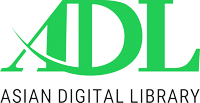Confidence in the era of distraction: The influence of media multitasking on self-perception and self-efficacy among university students
DOI:
https://doi.org/10.71085/sss.03.03.307Keywords:
Inter-relations, Digital Multitasking, Self-perception, Media Platform, Strategies and PsychologicalAbstract
The current research analyzed the inter-relations among digital multitasking, self-perception, self-efficacy, and gender influence over these variables, among university students. Digital multitasking is the concurrent use of more than one digital media platform. Self-perception encompasses a person's understanding and judgment of his/her own characteristics, skills, and behavior, whereas, Self-efficacy is the perception of capability in executing and dealing with tasks or challenges successfully. A total of 106 undergraduate students filled out the Media Multitasking Frequency-Revised (MMT-R) scale, Rosenberg Self-Esteem Scale (adapted as a self-perception measure), and the General Self-Efficacy Scale (GSE). Moderate media multitasking and self-efficacy, and low self-perception were found. Digital multitasking predicted self-perception with a significant effect explaining 5% of the variance. Males showed higher self-perception compared to females, no gender differences in multitasking or self-efficacy were found. Implications for teaching strategies and psychological well-being are explored, as well as limitations in terms of sample, measurement, and study design.
Downloads
References
Alghamdi, A., Karpinski, A. C., Lepp, A., & Barkley, J. E. (2020). Technology-focused multitasking self-efficacy and performance: Whether you think you can or think you can't, you can't. Journal of the Scholarship of Teaching and Learning, 20(3), 1–15. Retrieved from https://scholarworks.iu.edu/journals/index.php/josotl/article/view/34811
Bandura, A. (1997). Self-efficacy: The exercise of control. New York, NY: W.H. Freeman.
Bardhi, F., Rohm, A. J., & Sultan, F. (2010). Tuning in and tuning out: Media multitasking among young consumers. Journal of Consumer Behaviour, 9(4), 316–332.
Boahene, K. O., Fang, J., & Sampong, F. (2019). Understanding the impact of media multitasking on academic performance and self-perception: A student perspective. Journal of Educational Technology & Society, 22(3), 1–12.
Brooks, D. (2015). The impact of digital multitasking on academic performance: Evidence from classroom experiments. Journal of Educational Computing Research, 52(4), 589–607. https://doi.org/10.1177/0735633115571302
IBM. (1965). IBM System/360: A general-purpose system. Armonk, NY: IBM Corporation.
Junco, R. (2012). Too much face and not enough books: The relationship between multiple indices of Facebook use and academic performance. Computers in Human Behavior, 28(1), 187–198.
Kolo, C., Jaunzeme, J., & Döring, N. (2017). Digital media use and self-efficacy among university students: Patterns and predictors. Computers in Human Behavior, 76, 605–614. https://doi.org/10.1016/j.chb.2017.08.029
Lee, S., & Kim, H. (2024). Digital social multitasking and digital stress among adolescents: A peer norm perspective. PLOS ONE, 19(1), e0281024.
Lin, L., Lee, C., & Robertson, T. (2017). The indirect relationship of media multitasking self-efficacy on learning performance. Computers & Education, 113, 107–123.
Livingstone, S., & Helsper, E. J. (2007). Gradations in digital inclusion: Children, young people and the digital divide. New Media & Society, 9(4), 671–696.
Luo, L., Zhang, G., & Qi, X. (2020). The relationship among media multitasking, academic performance, and self-esteem in Chinese adolescents. Children and Youth Services Review, 116, 105263.
Misra, S., & Stokols, D. (2012). Psychological and health outcomes of perceived information overload. Environment and Behavior, 44(6), 737–759. https://doi.org/10.1177/0013916511404408
Margaryan, A., Littlejohn, A., & Vojt, G. (2011). Are digital natives a myth or reality? University students’ use of digital technologies. Computers & Education, 56(2), 429–440.
McLuhan, M. (1964). Understanding media: The extensions of man. New York, NY: McGraw-Hill.
Mohammed, S., Ahmad, R., & Yusof, S. A. M. (2023). Exploring the relationship of social media usage and multitasking on self-efficacy and academic performance. Jurnal Komunikasi: Malaysian Journal of Communication, 39(1), 115–130. Retrieved from https://ejournals.ukm.my/mjc/article/view/45631
Ophir, E., Nass, C., & Wagner, A. D. (2009). Cognitive control in media multitaskers. Proceedings of the National Academy of Sciences, 106(37), 15583–15587.
Pérez-Juárez, J. A., Casado-Lumbreras, C., & Colomo-Palacios, R. (2024). Digital distractions in the classroom: Exploring self-assessment and student perceptions. arXiv preprint. Retrieved from https://arxiv.org/abs/2402.05249
Rosen, L. D., Lim, A. F., Carrier, L. M., & Cheever, N. A. (2011). An empirical examination of the educational impact of text message-induced task switching in the classroom: Educational implications and strategies to enhance learning. Educational Psychology, 31(1), 93–101.
Sanbonmatsu, D. M., Strayer, D. L., Medeiros-Ward, N., & Watson, J. M. (2013). Who multi-tasks and why? Multi-tasking ability, perceived multi-tasking ability, impulsivity, and sensation seeking. PLOS ONE, 8(1), e54402.
Turkle, S. (2011). Alone together: Why we expect more from technology and less from each other. New York, NY: Basic Books.
Wang, Z., & Tchernev, J. M. (2015). The “myth” of media multitasking: Reciprocal dynamics of media multitasking, personal needs, and gratifications. Computers in Human Behavior, 49, 472–479.
Downloads
Published
Data Availability Statement
The data that support the findings of this study are available from the corresponding author upon reasonable request.


































